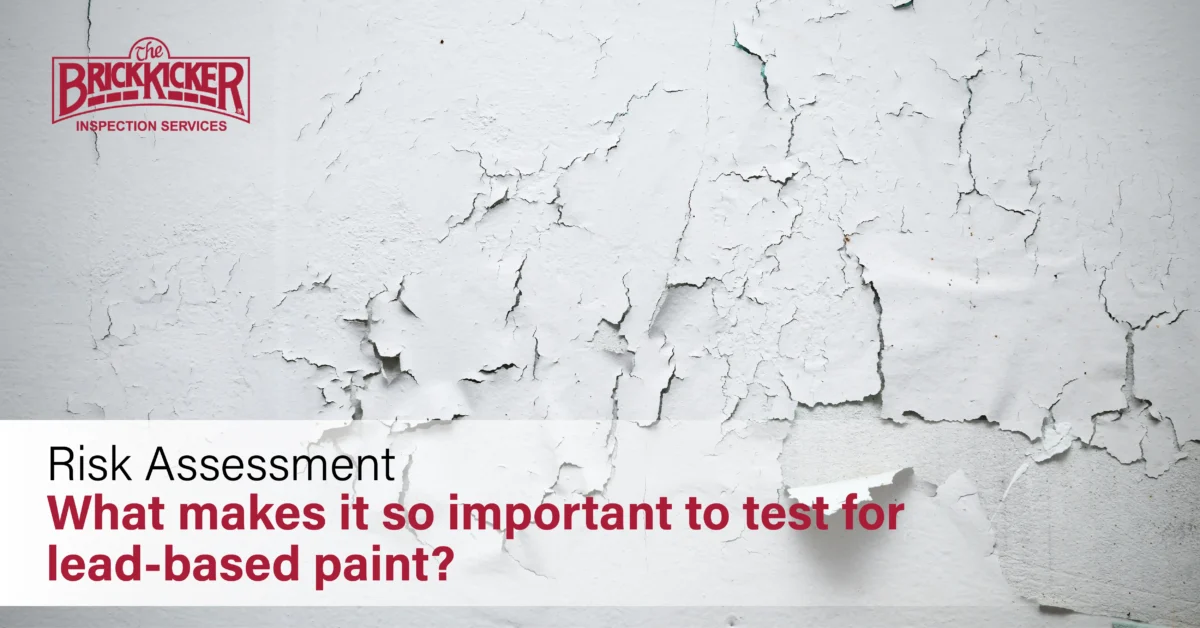Risk Assessment: What makes it so important to test for lead-based paint?

According to the EPA, lead-based paint was outlawed for home use in 1978. However, many older homes and buildings still have lead-based paint. It might seriously endanger your health if it is not appropriately treated or eliminated. This is where lead-based paint test comes in.
A lead-based paint test is a procedure that determines whether a painted surface contains lead and how much lead is present. Test for lead-based paint is crucial because it may assist in identifying possible health risks. It can also guarantee safety measures to protect people from lead exposure.
This blog will discuss a lead-based paint test and its significance in detail.
What Is A Lead-Based Paint Test?
A lead-based paint test is a thorough process to detect lead-based paint in residential or commercial buildings. It also involves evaluating potential risks connected to lead-based paint.
It is essential to test for lead-based paint if you want to protect yourself and your loved ones from the adverse health consequences of lead exposure. This is particularly true if you live with children, pregnant women, or pets.
Each method aims to identify and assess lead content in painted surfaces. Some of the common testing methods are listed below.
X-ray Fluorescence (XRF) Analyzers
XRF analyzers are portable devices that use X-ray technology to measure the amount of lead in painted surfaces. The main part of these analyzers is that they do not cause any damage.
Paint Chip Sampling
This is the second method that is often used. It involves collecting small samples of painted surfaces. These samples are then sent to a laboratory for analysis. Further, the lab results help determine the lead content found in the sample.
Soil Sampling
This is another important method of lead-based paint testing. This involves collecting soil samples from around the property. The samples are taken to assess potential lead contamination. This potential lead contamination is especially assessed in areas where lead-based paint may have deteriorated over time.
The process of lead-based paint test typically includes the examination of layers of paint. The testing aims to identify areas where lead-based paint is present. Further, it involves assessing its condition. And later determine the potential for generating lead dust or chips.
The Significance of Lead-Based Paint Test
Lead-based paint, once a common element in properties, has left a lasting legacy of potential health risks. Understanding the significance of lead-based paint testing is paramount in safeguarding the well-being of occupants. It also helps in maintaining the integrity of properties.
This comprehensive examination is crucial for identifying the presence of lead. It also assesses associated risks, legal obligations, and the overall impact on the environment.
Identifying Hidden Threats
Lead-based paint testing serves as a crucial tool in identifying hidden threats. These threats can lie within the layers of paint adorning walls, doors, and windows. This is especially the case in buildings constructed before 1978.
Assessing Risk
Beyond mere detection, lead-based paint testing incorporates a comprehensive risk assessment.
This involves:
- Evaluating the condition of painted surfaces
- Assessing the potential for lead dust or chips to be generated
- Determining the level of risk to occupants
Understanding the risks associated with lead-based paint in a property helps make informed decisions. These decisions can be about necessary actions and potential remediation efforts that you shall take.
Legal Compliance and Disclosure Obligations
Another crucial aspect of lead-based paint testing is its role in legal compliance and disclosure obligations.
Some federal laws mandate the disclosure of known lead-based paint hazards in residential properties built before 1978. An example of such a law is The Residential Lead-Based Paint Hazard Reduction Act of 1992.
Sellers and landlords must provide information about lead-based paint and testing results to potential buyers or tenants. This legal framework underscores the significance of testing in meeting regulatory requirements. Further, they also ensure transparency in real estate transactions.
Preserving Property Value
The significance of lead-based paint test extends beyond health considerations to the preservation of property value.
Proactively managing lead-based paint concerns and implementing remediation measures can boost a property’s compliance, longevity, and market value.
Mitigating Environmental Impact
Lead-based paint testing aligns with broader environmental considerations. The degradation of lead-based paint over time can result in the release of lead particles into the environment. It further contributes to soil and water contamination.
Identifying and mitigating lead hazards contributes to responsible environmental stewardship by property owners.
Informed Decision-Making
Lead-based paint testing empowers property owners with valuable information. Property owners use this information to make informed decisions.
Property owners can take focused action to resolve issues. They can use the testing results that identify the existence of lead-based paint and potential dangers. They can also put required remediation plans into place and make the living environment safer for residents.
Public Health Impact
Beyond individual properties, the significance of lead-based paint testing extends to the broader public health impact.
By addressing lead hazards at the source, communities can collectively contribute to reducing the incidence of lead poisoning and its associated health consequences. The communal effort to prioritize lead safety underscores the broader societal responsibility.
The Comprehensive Approach: Lead-Safe Futures Through Testing
On the whole, test for lead-based paint is an important step that you must undertake. This saves you from the potential risks and society on a broader level.
The significance of lead-based paint tests goes beyond just protecting vulnerable populations. It also ensures that the property complies with legal obligations, too. Eventually, it preserves the property value in the long run.As you embark on the homeownership or property management journey, trust The BrickKicker to be your partner in this endeavor. Our expert insights and services empower you to make informed decisions and safeguard your investment. You can contribute to a more responsible and sustainable living environment with us. Take the proactive step towards a lead-safe future—contact The BrickKicker today for comprehensive lead-based paint testing.